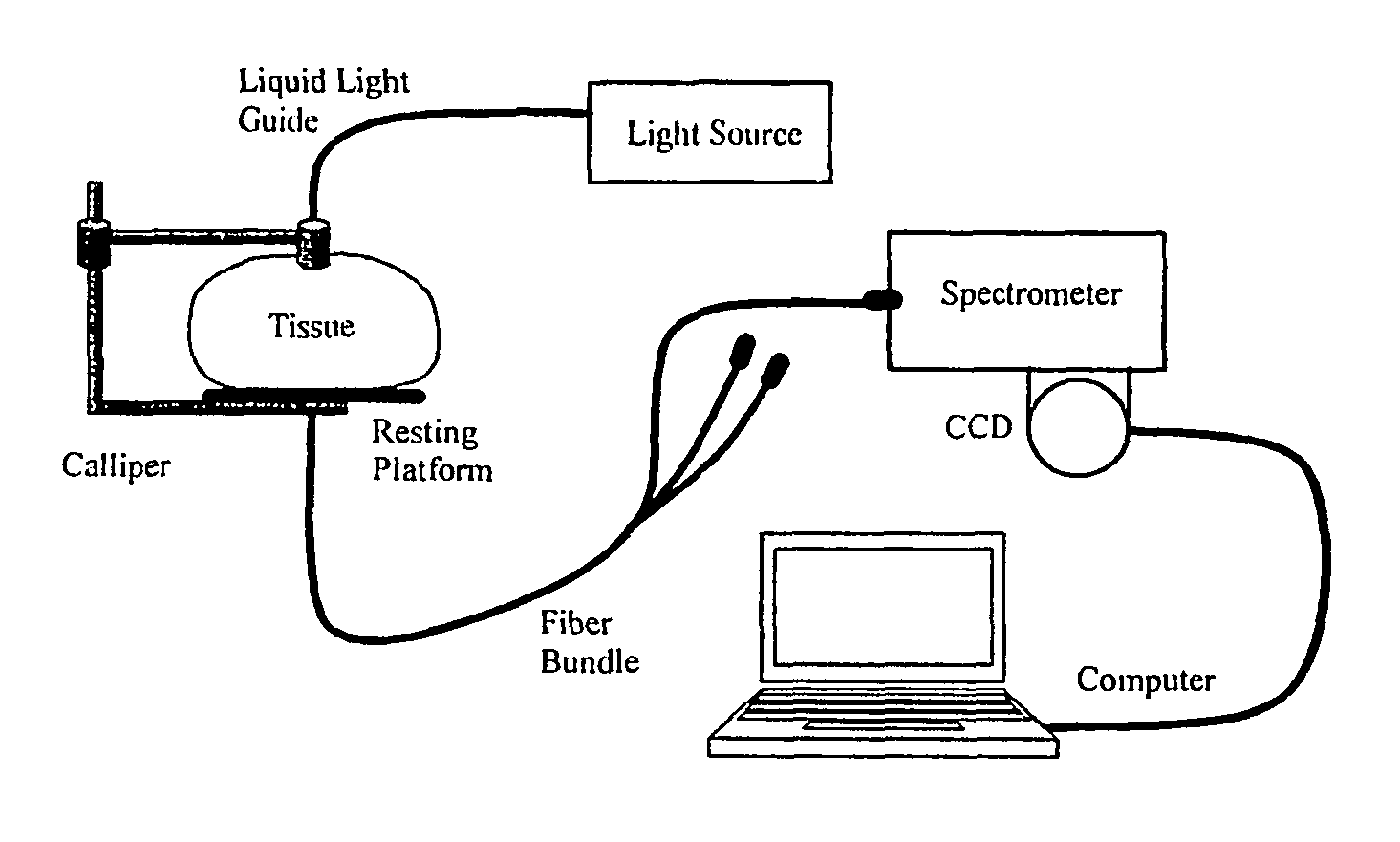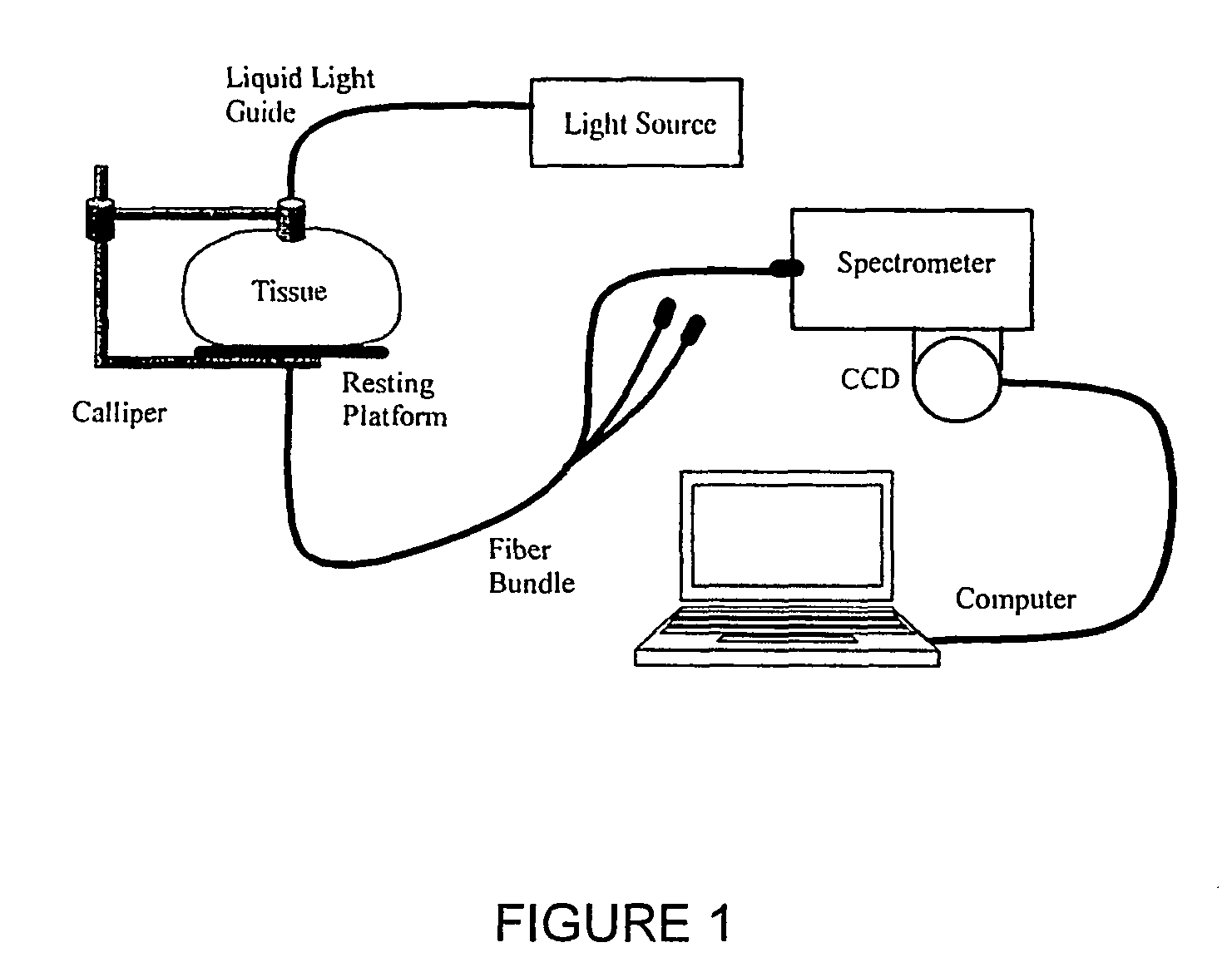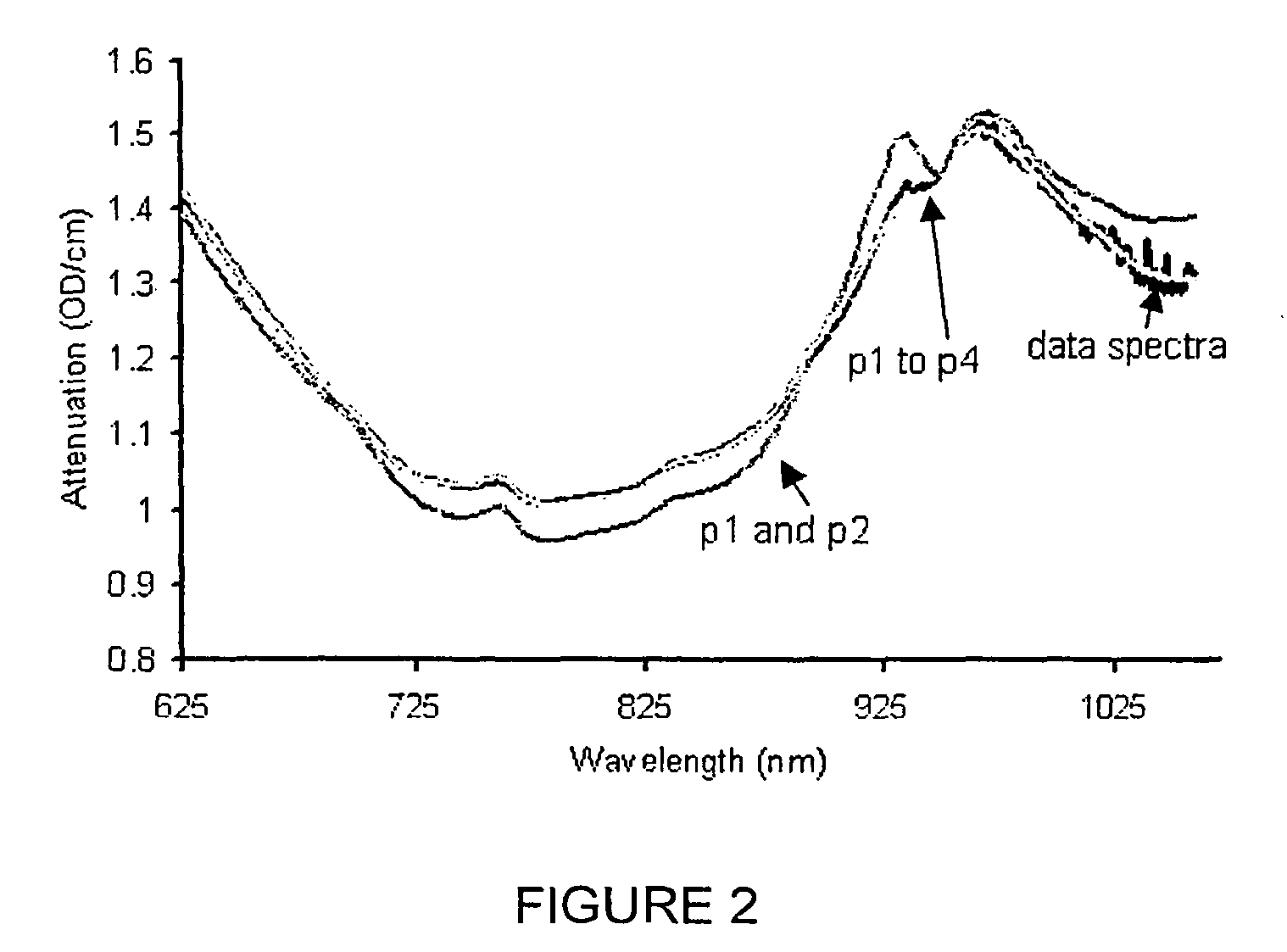Optical transillumination and reflectance spectroscopy to quantify disease risk
a technology of reflectance spectroscopy and optical transillumination, which is applied in the field of optical transillumination/reflectance spectroscopy, can solve the problems of high cost of current disease screening techniques, redirected investigators' focus, and late introduction of breast cancer risk assessment and risk assessment. to achieve the effect of increasing the individual risk of this diseas
- Summary
- Abstract
- Description
- Claims
- Application Information
AI Technical Summary
Benefits of technology
Problems solved by technology
Method used
Image
Examples
example
Breast Tissue Transillumination Study
[0065]Transillumination spectroscopy measurements were taken in a dark room with the volunteer seated comfortably, and the breast resting on a horizontal support (FIG. 1). Total data acquisition time was approximately 15 minutes allowing measurements at all 8 positions and necessary re-positioning of the optodes. There was little discomfort to the volunteers due to point compression of the breast by the source optode.
[0066]FIG. 3 shows an example of a typical set of measurements comprised of eight spectra from the volunteer. Spectra from the respective bilateral positions of the breast show symmetry, as expected in women with healthy breast tissue. In previous studies, this criterion of spectral symmetry in the same position of both breasts was used, by Egan and Dolan, to indicate absence of breast cancer in the examined areas (8). The reproducibility of the optical transillumination measurements within one visit was analyzed by recruiting a volu...
PUM
 Login to View More
Login to View More Abstract
Description
Claims
Application Information
 Login to View More
Login to View More - R&D
- Intellectual Property
- Life Sciences
- Materials
- Tech Scout
- Unparalleled Data Quality
- Higher Quality Content
- 60% Fewer Hallucinations
Browse by: Latest US Patents, China's latest patents, Technical Efficacy Thesaurus, Application Domain, Technology Topic, Popular Technical Reports.
© 2025 PatSnap. All rights reserved.Legal|Privacy policy|Modern Slavery Act Transparency Statement|Sitemap|About US| Contact US: help@patsnap.com



